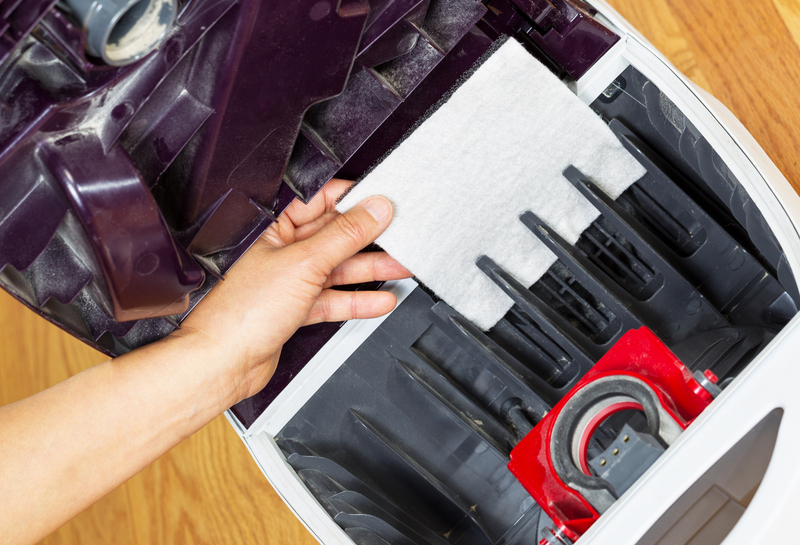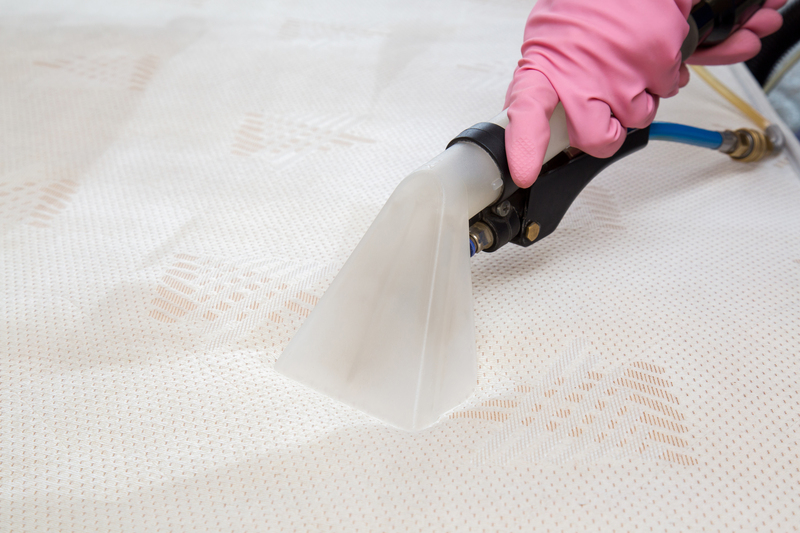End Grease Problems: Your Clear-Cut Guide to Clean Enamel Oven Trays
Posted on 16/06/2025
End Grease Problems: Your Clear-Cut Guide to Clean Enamel Oven Trays
Are you frustrated by stubborn grease and burnt-on stains plaguing your enamel oven trays? Whether you're a passionate home baker or enjoy the occasional Sunday roast, cleaning your enamel oven trays doesn't have to be a dreaded chore. With the right methods and a bit of know-how, you can easily restore your oven trays to their original shine and keep them grease-free for years to come. This guide will walk you through everything you need to know to end grease problems and achieve professionally clean enamel oven trays every time.
Why Properly Cleaning Enamel Oven Trays Matters
Enamel oven trays are prized for their non-stick surfaces, even heat distribution, and stylish design. However, improper cleaning can cause:
- Buildup of grease and burnt residues reducing their non-stick capability
- Unpleasant odors and *smoke* during oven use
- Potential cross-contamination and flavor transfer
- Long-term staining or surface damage, shortening tray lifespan
Frequent and proper cleaning of your enamel oven trays not only keeps your kitchen fresh but also ensures delicious, uncontaminated meals every time.

Understanding Your Enamel Oven Tray: The Basics
Before we jump into cleaning tips, it's essential to understand what makes enamel trays special.
- Coated with glass-like porcelain enamel: This creates a smooth, non-stick, and non-porous surface.
- Resistant to rust and corrosion: Unlike bare metal, enamel resists oxidization effectively.
- Vulnerable to chips if mishandled: Always handle with care to preserve the enamel coating.
Knowing these characteristics will help you choose cleaning methods that protect and prolong your tray's life.
Common Grease Problems on Enamel Oven Trays
Grease is an inevitable result of cooking, especially when roasting meats or baking. The main grease problems on enamel trays include:
- Sticky, hard-to-remove residues after baking oily foods
- Burnt-on stains from spillage and repeated high heat
- Yellowing or discoloration
- Lingering odors after washing
Understanding these challenges is the first step in choosing the right cleaning solution for spotless, odor-free enamel oven trays.
Quick Pre-Cleaning Checklist
To streamline your cleaning, prep your tools first:
- Soft sponge or microfiber cloth (avoid steel wool on enamel)
- Mild dish soap
- Baking soda and white vinegar
- Plastic or nylon scraper
- Hot water
- Non-abrasive oven cleaner (optional)
- Rubber gloves
The Step-by-Step Guide to Cleaning Enamel Oven Trays
1. Immediate Action: Wipe Down After Use
Whenever possible, wipe your enamel oven tray with a damp cloth after each use. Quick action can prevent grease and starches from setting and hardening. This simple habit is your first defense against stubborn stains.
2. The Soak Method: Loosening Stubborn Grease
For moderate to heavy grease:
- Allow the tray to cool after use. Never immerse hot enamel in cold water to avoid thermal shock and possible cracking.
- Fill your sink with hot, soapy water and submerge the tray completely.
- Let it soak for 30-60 minutes. This softens grease and food residues, making them easier to remove.
- Use a soft sponge or nylon scraper to lift away loosened debris.
- Rinse and repeat as needed.
This classic approach often eliminates most surface oils and residues.
3. Baking Soda and Vinegar: The Dynamic Duo
Baking soda and vinegar create a gentle, effervescent reaction that lifts grease and odors without harming enamel:
- Sprinkle a generous layer of baking soda over stubborn spots.
- Lightly spray or pour white vinegar over the powder until it fizzes.
- Let the mixture sit for 10-20 minutes.
- Scrub gently with a soft sponge. Focus on greasy regions, repeating the process as needed.
- Rinse thoroughly with hot water.
Pro tip: For extremely stubborn stains, create a paste with baking soda and water, apply thickly, and leave it overnight before scrubbing and rinsing.
4. Non-Abrasive Oven Cleaner for Deep Cleans
For caked-on or burnt stains that resist soaking and scrubbing, choose a non-abrasive, enamel-safe oven cleaner:
- Check the label to ensure it's suitable for enamel surfaces.
- Apply as directed -- usually spraying onto the affected area and allowing to sit for a specified period.
- Wipe off with a damp, clean cloth, and rinse thoroughly to remove all chemical residues.
Important: Always use gloves and ensure kitchen is well-ventilated when working with commercial cleaners.
5. Tackling Odors and Discolorations
Even after grease is removed, stains and odors can linger. Here's how to freshen up your trays:
- Bake a paste of baking soda and water at a low oven temperature (approx. 100?C/210?F) for 15 minutes, then rinse
- Rub lemon juice over the tray to neutralize odors
- For yellowing, try a hydrogen peroxide solution (handle with care!)
Prolonging the Life of Enamel Oven Trays
Once your enamel trays are sparkling clean, a little care goes a long way to keep them grease-free:
- Line trays with baking parchment or silicone mats for messier recipes
- Avoid metal utensils that may chip enamel coating
- Do not use steel wool or highly abrasive pads
- Store trays separately to prevent scratches and chips
Regular cleaning and proper maintenance ensure your oven trays serve you well year after year--and help you win the ongoing battle against kitchen grease.
Time-Saving Tips for Busy Cooks
- Clean while warm: Wiping the tray while it's still slightly warm (not hot!) can make grease removal easier.
- Keep a stash of pre-cut parchment paper to minimize tray contact with food during baking and roasting.
- Use the overnight soak trick: If you're too tired to clean after dinner, fill the tray with soapy water and leave it to soak overnight. You can finish the job in seconds the next morning!
How to Handle Trouble Spots: Frequently Asked Questions
Q1: Can I put enamel oven trays in the dishwasher?
A: Most enamel trays are technically dishwasher-safe. However, repeated high-temp dishwasher cycles and abrasive powders may dull the surface or cause micro-chipping. Hand-washing is gentler and prolongs the enamel coating. If you must use the dishwasher, avoid high-heat cycles and use gentle detergents.
Q2: Are commercial oven cleaners safe for enamel trays?
A: Some oven cleaners are safe for enamel, but always check product labeling. Avoid caustic soda and abrasive powders. Spot test on a small area first if unsure!
Q3: How do I remove black, burnt-on stains?
A: Use the baking soda paste method described above or a special enamel-friendly oven cleaner. Avoid aggressive scraping, which may damage the enamel surface.
Q4: Is it safe to use vinegar on enamel?
A: Yes! Vinegar is safe on enamel and helps dissolve limescale and grease. However, don't let strong acids pool for hours; rinse thoroughly after cleaning.
Q5: What if my enamel tray has chips?
A: If the enamel is chipped, the underlying metal may rust. Discontinue use for food preparation if rust appears. Minor chips can sometimes be repaired with enamel touch-up kits (found at hardware stores), but replacement is safest for food hygiene.
Essential Don'ts: Avoid These Common Mistakes
- Never use metal scouring pads: These can scratch or chip enamel.
- Don't use highly alkaline or bleach-based cleaners: These can damage the coating over time.
- Never shock enamel with rapid temperature changes: Sudden hot-to-cold changes can crack the enamel surface.
- Don't store trays stacked without protection - always separate with cloth or paper towels to prevent scratching.
Eco-Friendly Cleaning Alternatives for Enamel Oven Trays
If you prefer natural solutions or want to cut down on chemicals in the kitchen:
- Lemon & Salt Scrub: Sprinkle coarse salt over half a cut lemon and scrub on stains. It's natural, effective, and leaves behind a fresh scent.
- Baking Soda & Hydrogen Peroxide: A mix of these two lifts stubborn stains without harsh chemicals. Be sure to rinse well.
- Steam Cleaning: Fill your tray with water, heat in the oven for 20-30 minutes at 100?C/210?F, then wipe away loosened grime with a soft sponge.
Eco-friendly cleaning not only preserves your enamel trays but also your family's health and the planet's well-being.

Conclusion: Enjoy Effortlessly Clean Enamel Oven Trays--And End Grease Problems for Good!
Stubborn grease and trapped odors are no match for smart, careful cleaning. With the methods above, you'll enjoy spotless, sparkling enamel oven trays for years without back-breaking scrubbing or harsh chemicals. Remember: prevention by lining, prompt washing after use, and using the right materials are your best lines of defense.
Make these cleaning habits part of your kitchen routine, and you'll never dread grease problems again. Happy cooking--and even happier cleaning!
Related Resources
Say goodbye to stubborn grease--discover your clear-cut guide to clean enamel oven trays every time you cook!




